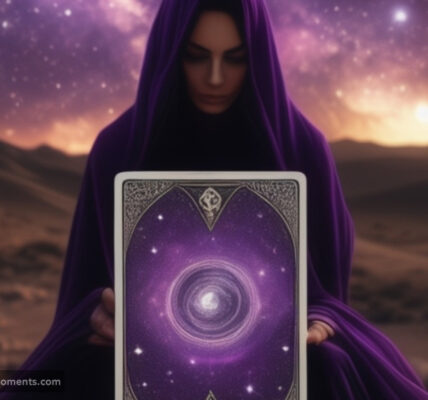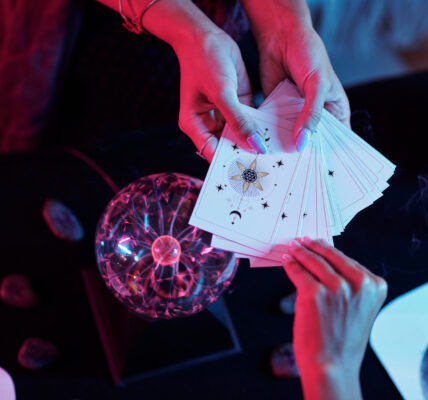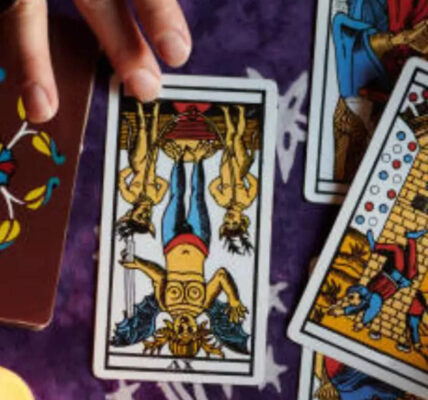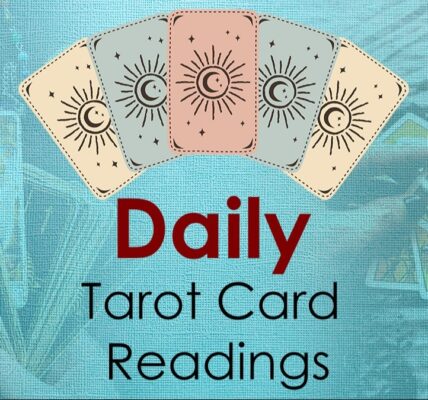When it comes to Tarot, some are skeptical while others are fascinated. In recent years, there has been a resurgence in Tarot use, particularly among Millennials and Gen Z, recognizing its psychological potential. Beyond the magical aura surrounding them, their meditative power emerges. Psychologist Carl Gustav Jung used them to offer patients a different perspective on their lives. It’s their strong symbolism that makes them a universal language, appreciated by artists interpreting them creatively. Elisa Seitzinger, an illustrator passionate about Tarot, is among them. We decided to explore the origin and reasons for their success with her. But read on because we asked her about the 2024 cards for each element.

Who is Elisa Seitzinger and why is she the right person to talk about Tarot?
When we decided to discuss Tarot, we were already familiar with Elisa Seitzinger‘s work. Our encounter was synchronous, much like hers with Tarot. But let’s start from the beginning. Elisa Seitzinger lives in Turin, working as an illustrator and visual artist. From 2015 to 2020, she taught Morphology, Dynamics of Form, and Iconography at the European Institute of Design in Turin. Her work always begins with manual ink drawing, pursuing a two-dimensional, static form with strong symbolic content. Her work has earned several recognitions, including the double gold medal from Autori d’Immagini in 2021, and being shortlisted for the World Illustration Awards 2021 and 2023. Delving into the Tarot world, we know Elisa for the deck she created commissioned by Scarabeo, a Turin-based publishing house. But exploring her work, we discovered two earlier decks, one for the English magazine Sabat Magazine and another called Minor Arcana, an independent project inspired by Calvino’s novel, “The Castle of Crossed Destinies.” But where does all this fascination for Tarot come from? We asked her in an interview.

Let’s start with a direct question. Has the esoteric world always been a part of you?
I’ve always been fascinated by the esoteric world and symbols. Even my city, Turin, is known as the magical city. In general, I believe Tarot finds you, and my story is proof of that. When I found my first Tarot deck, I was a teenager. I used to visit my grandfather’s abandoned factory often to discover unique items. One day, I stumbled upon a wooden box, and when I opened it, I was enchanted. Inside was this wonderful Tarot deck by Vedova Fantini Borgomanero, still printed using woodcutting techniques. Very rough and misaligned, yet stunning. It probably belonged to a factory worker who read them during lunch breaks. I decided to take them home, and that’s when a whole new world opened up for me.
How did this fascination evolve? How did it merge with your work as an illustrator?
Everything materialized a few years ago when the Ettore Fico Museum in Turin – incidentally near Scarabeo’s headquarters – organized an exhibition entirely dedicated to Tarot. They displayed incredible decks, from Visconti-Sforza to those designed during Bauhaus. I was deeply impressed by this exhibition. At that time, I was teaching Iconography and Dynamics of Form at IED. That year, I decided to conduct workshops on Tarot. I started studying them, and then the commission from Sabat Magazine came, so I began drawing them myself.

A series of synchronic events led you to create your versions of Tarot. Earlier, we discussed how many artists interpreted them over the centuries. What was it like for you?
The Tarot has always been the domain of many artists, from Salvador Dalí to Leonora Carrington, one of my favorite artists. I believe drawing Tarot is a bit like designing a typeface. You need those elements that make it readable, but the formal variations are infinite, depending on the artist’s personality and the emotions you wish to convey. You must have the right semiotic elements, but otherwise, you’re entirely free to transform them. My Sabat deck is quite ironic and cynical, criticizing social viewpoints a bit. An interesting aspect of the Neapolitan deck suits was that they anciently represented social classes. Batons were the peasant class (today, working class), cups were the clergy, swords were the military class, and coins were the aristocracy (later high bourgeoisie), so you can play a lot with this social aspect.

Studying and drawing them, what aspect of Tarot intrigued you the most?
I think one of the aspects that surprised me the most is their contemporaneity. In Tarot, besides light and shadow, good and evil, there’s a perfect balance of masculine and feminine. For example, it was previously believed that if the Emperor appeared in a reading for a woman, it referred to a paternal or male figure in the consultant’s life, but it speaks about our masculine aspect or vice versa. A woman can feel like an Emperor, and a man can feel like an Empress. It’s about the energy of that card not necessarily belonging to their physical gender but, rather, a psychological matter. Even Temperance, for instance, is a sexless angel.
You’ve mentioned that symbolism is very important to you. Do you think this aspect intrigues people? What do you believe makes Tarot a universal language?
To answer this question, I want to tell you about my first Tarot art deck. I called it “Minor Arcana,” and it’s incomplete as it ranges from the Ace to Seven and includes court figures, excluding the knights. I took the idea from Calvino’s novel, “The Castle of Crossed Destinies,” which tells the story of characters who get lost in the woods, find themselves in a castle, but lose the ability to speak. At that point, the only way they can communicate their story is through Tarot, which assumes a narrative function. It’s somewhat as if the symbol replaced language. In fact, Calvino’s intuition is precisely that – making the character mute and speaking through figures, images, and symbols that belong to our culture and collective unconscious.

Tarot is a universal language, which is why many artists have embraced it. It becomes a genuine medium capable of speaking to everyone. The language is secular yet collects religious iconography inherent in each of us. For instance, the archetype of the Wheel of Fortune is closely linked to mandalas in Eastern religions, symbolizing the cyclical nature of life. Tarot has the ability to connect everyone through images. It’s as if there’s a collective human unconscious capable of recognizing this language. Today, we read the cards because we want to analyze aspects of ourselves, to improve, or consult them when we’re in difficulty, seeking a different perspective for clarity.
In short, what do you know about their origins?
It’s believed that they originated in medieval times, but they actually emerged during the Renaissance in the grand courts, such as those of the Sforza and Estensi. These grand courts were steeped in Neoplatonic philosophy, thus also embedded with religious symbols reinterpreted through a humanistic lens, placing man at the center.
Let’s talk about your deck created for Scarabeo, the one we’ll use for this 2024 reading. How was it to create it?
Designing an entire Tarot deck (22 major arcana and 56 minors) means studying extensively before starting work. Then, while drawing, one needs to let go and immerse in the flow of what the symbols communicate to our unconscious. As with the Sabat deck, this process unveiled many aspects of myself that continue to explore different visions and new areas of interest. For this deck, at the client’s request, I drew inspiration from Rider Waite, which incidentally are the most used globally because they have a more straightforward interpretation of the minor arcana compared to the Marseille, which have a more abstract symbolism. This time, unlike the Sabat deck, we chose gold instead of silver.
It’s time. Let’s draw two cards for each element.
For this 2024 reading, I chose to draw one major arcana and one minor for each element. As we know, each suit refers to an element. Swords to air, wands to fire, cups to water, and coins to earth. So, we’ll find them associated like this. The first draw is for the Water element, related to the zodiac signs of Scorpio, Cancer, and Pisces. The cards drawn are The Star and the Knight of Cups. Definitely two very bright cards; the first refers to a moment of hope, the birth of a new dream, while the second heralds infatuation or, more generally, assures that everything will be fine. You will probably find a great energy that will drive you to action.


For the Fire element (pertaining to the zodiac signs Aries, Leo, and Sagittarius), the cards drawn are The Lovers and the Ten of Wands. The Lovers card symbolizes choice, not just in love but representing decisions between opposites such as good and evil, virtue and temptations, or even different paths in life, including in the professional sphere. Alongside it, the Ten of Wands indicates a strong desire to act, to create. In emotional matters, it signifies the culmination of a relationship.


The cards for Air (associated with the signs Gemini, Libra, and Aquarius) are Justice and the Ace of Swords. Justice underscores the need to rediscover values, often referring to righteousness and commitment. The Ace of Swords intensifies the rational energy of Justice, emphasizing the firmness and order announced by the former. This 2024 heralds work and the pursuit of the right path.
For Earth (linked to Taurus, Virgo, and Capricorn), the cards drawn are The Empress and the King of Pentacles. This major arcana represents femininity, fertility, and creative strength. It symbolizes Mother Earth, openness, sensitivity, and the ability to create and embody ideas. Similarly, the minor arcana enhances the meaning of the major. The King of Pentacles confirms the prosperity of the former card, referring to a period of stability, both emotionally and financially.

Courtesy Elisa Seitzinger
Ph Credits Fabio Rovere




